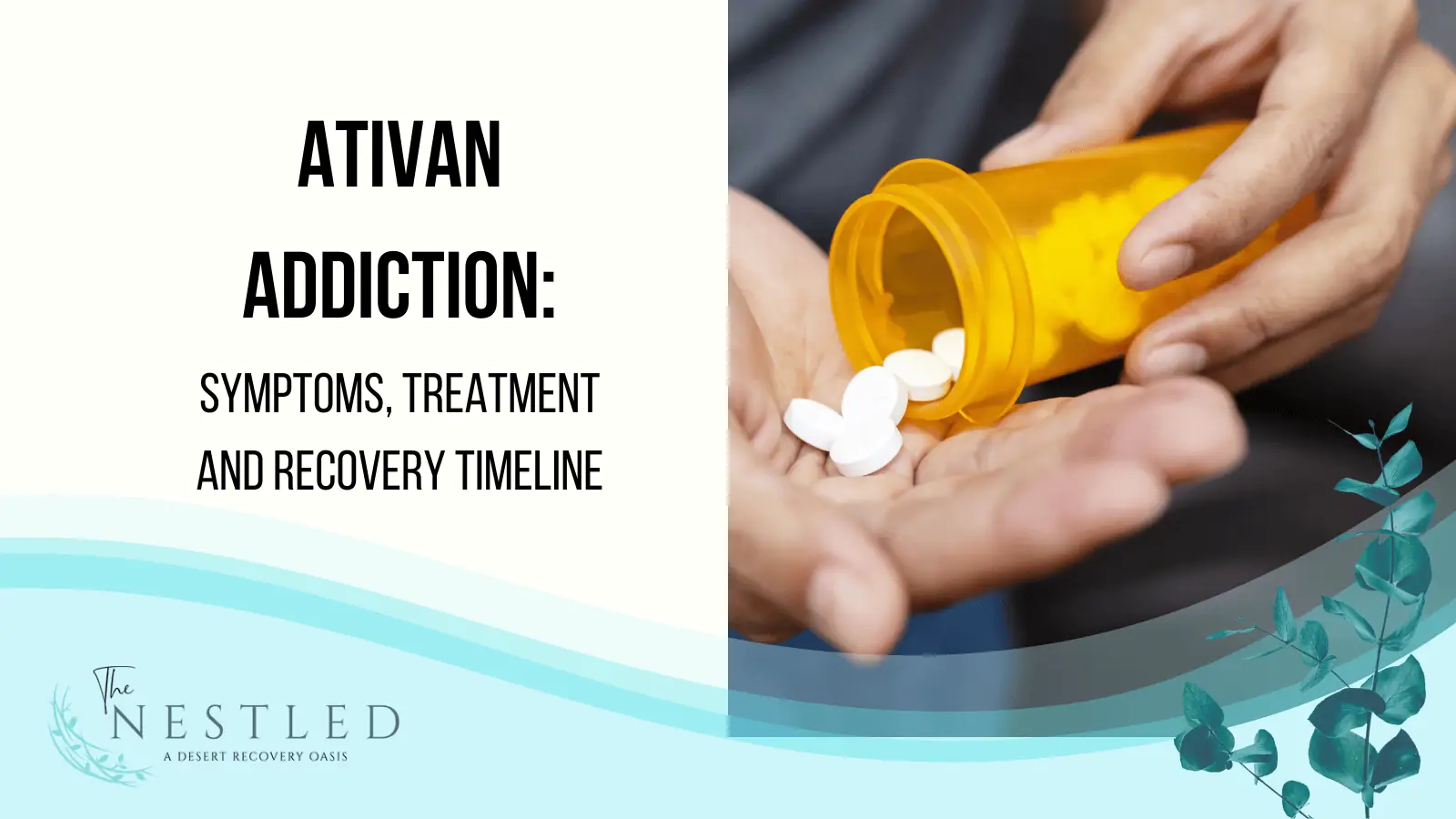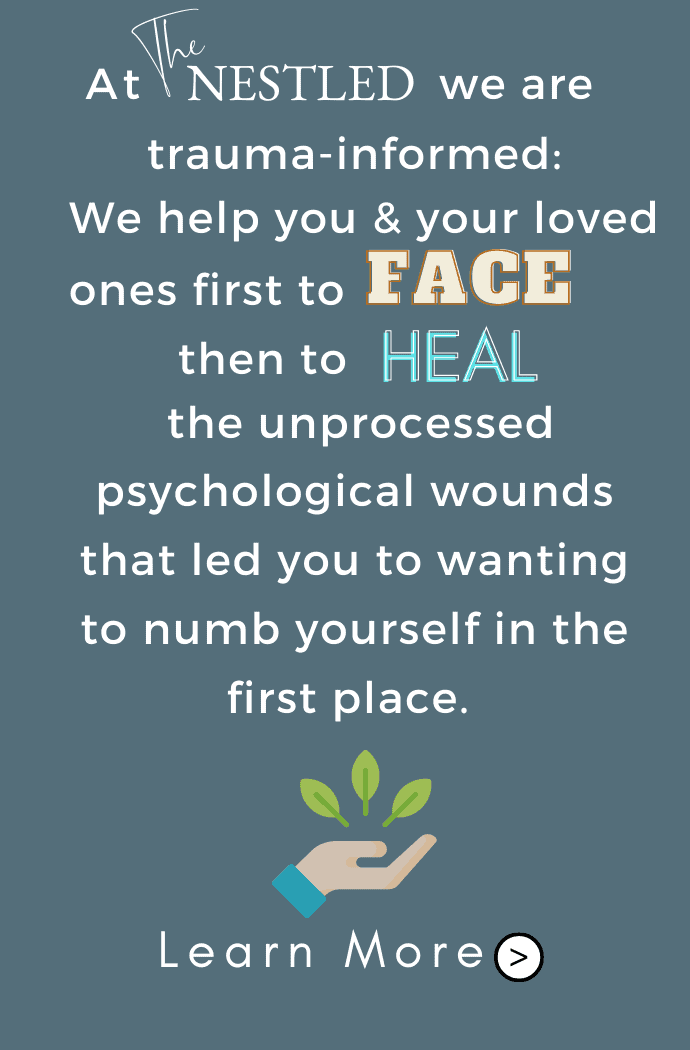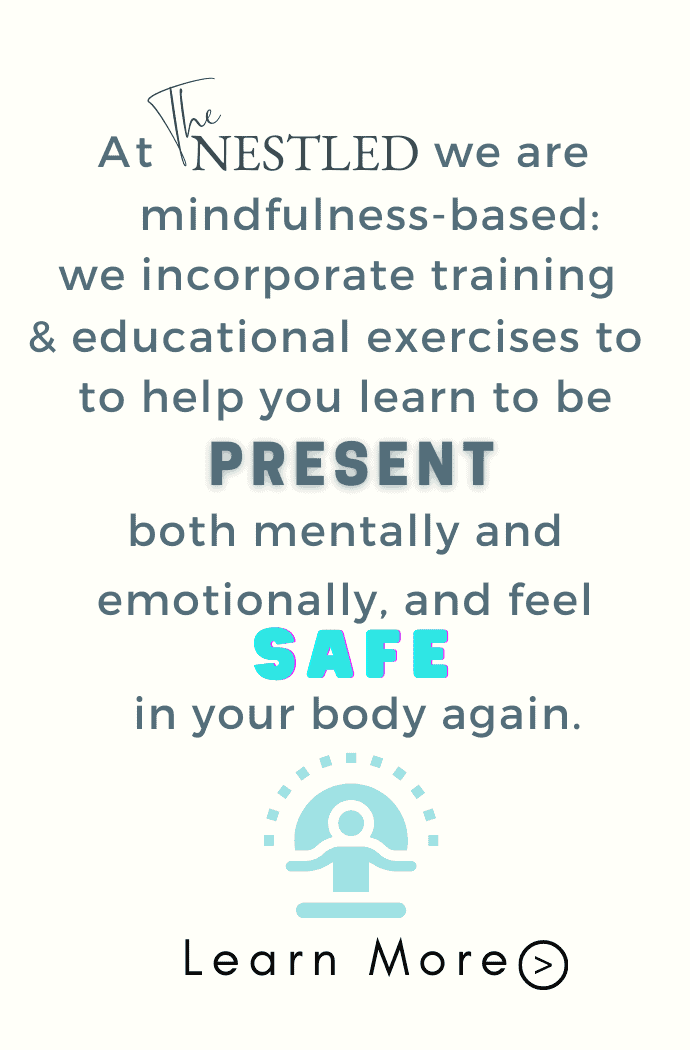Understanding addiction and its grasp on life can be a profound struggle, one that many individuals and families face. Ativan, a medication prescribed to treat anxiety, insomnia, and other conditions, can unfortunately lead to dependency and addiction. Recognizing the signs and seeking treatment for Ativan addiction is a crucial step in reclaiming control and moving towards recovery.
Ativan addiction involves both physical and psychological reliance on the drug, often characterized by an inability to function normally without it. Symptoms of this addiction can vary, ranging from increased tolerance and withdrawal symptoms to changes in behavior and mental health.
Navigating the path from Ativan dependency to freedom is complex, requiring a comprehensive understanding of the treatment and recovery process. Let’s delve into the world of Ativan addiction, outlining key symptoms, available treatment options, and the recovery process..
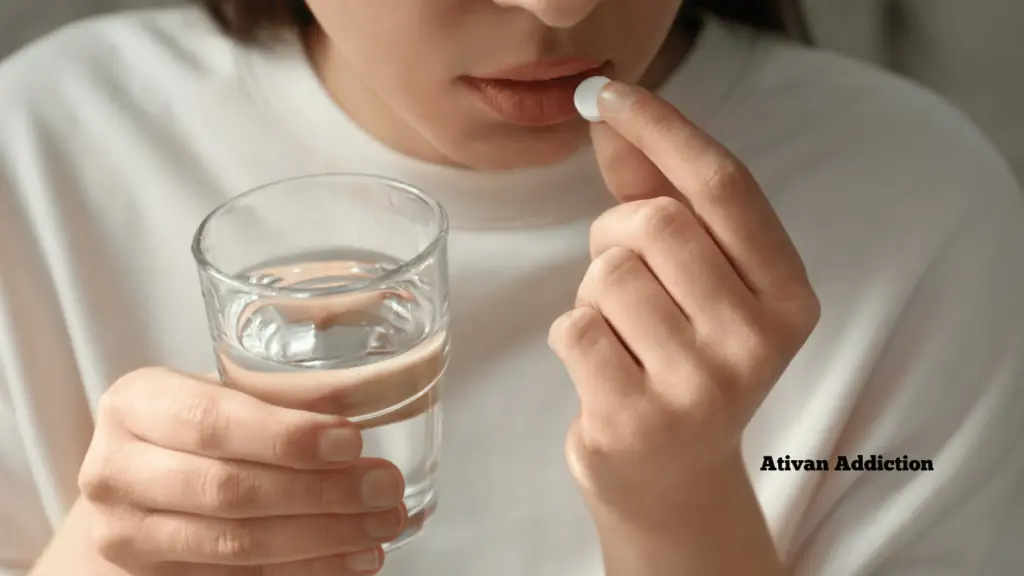
What is Ativan?
Ativan, or lorazepam, is a benzodiazepine prescribed for anxiety, insomnia, seizures, and as sedation in medical procedures. It calms the brain by enhancing gamma-aminobutyric acid (GABA) effects, but due to its high potential for dependence and tolerance, it’s generally used short-term and under strict medical guidance. Prolonged or improper use can lead to addiction and withdrawal symptoms.
How Does Ativan Addiction Develop?
In its initial use, it is often prescribed for anxiety, insomnia, or as a sedative before medical procedures. With regular use, individuals may develop tolerance, requiring higher doses to achieve the same effect.
Physical and psychological dependency can develop, where Ativan becomes necessary for normal functioning or to avoid withdrawal symptoms. Gradual increase in usage and a stronger desire to consume Ativan, even in the face of negative consequences.
Physical and Psychological Aspects of Ativan Addiction
- Physical Dependence: Characterized by withdrawal symptoms like sweating, nausea, insomnia, tremors, and anxiety when stopping or reducing use.
- Psychological Dependence: Cravings for Ativan and anxiety or panic attacks when not using the drug.
- Mental Health Impact: Exacerbation of underlying anxiety or depression, mood swings, and cognitive impairments.
Understanding these aspects of Ativan addiction is crucial for recognizing the signs and seeking appropriate treatment. The Nestled Recovery Center in Las Vegas focuses on addressing both the physical and psychological facets of addiction, offering a comprehensive approach to treatment and recovery.
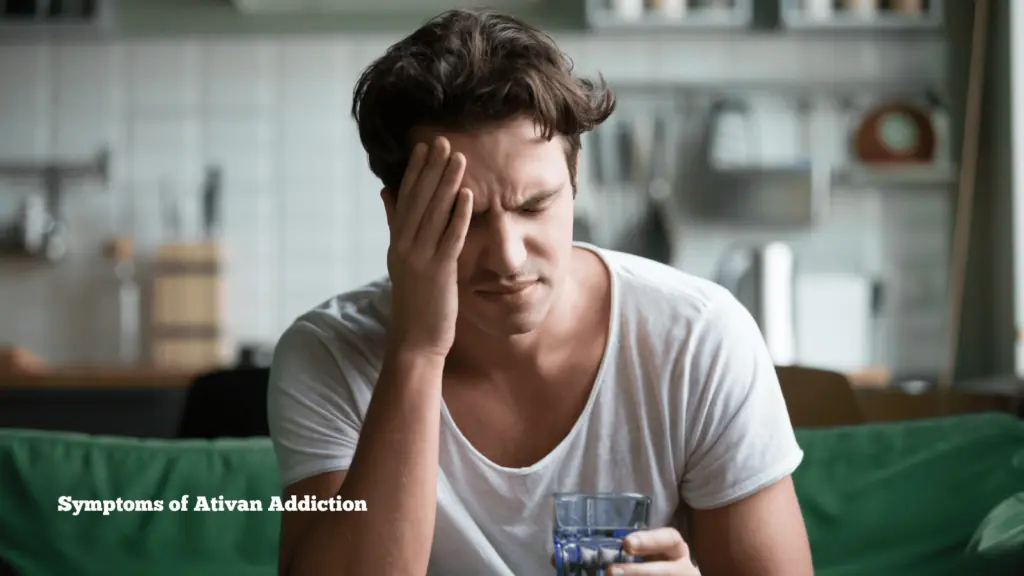
Symptoms of Ativan Addiction
Ativan addiction can manifest through various symptoms, spanning physical, behavioral, and psychological domains. Symptoms of Ativan addiction include increased drug tolerance, withdrawal symptoms like headaches and nausea, mood changes, heightened anxiety, and behavioral shifts such as neglecting duties and social isolation. Early recognition of these signs is key to seeking effective treatment.
- Physical Symptoms:
- Increased Tolerance: Needing larger doses of Ativan to feel the same effects.
- Withdrawal Symptoms: Experiencing physical symptoms like headaches, nausea, sweating, and tremors when not taking the drug.
- Sleep Disturbances: Insomnia or significant changes in sleep patterns.
- Physical Decline: Notable changes in appearance, such as weight loss or gain, and neglect of personal hygiene.
- Behavioral Symptoms:
- Compulsive Drug Seeking: Persistent desire or unsuccessful efforts to cut down or control Ativan use.
- Continued Use Despite Harm: Using Ativan despite knowing the physical or psychological harm it’s causing.
- Neglect of Activities: Abandoning social, occupational, or recreational activities in favor of drug use.
- Risky Use: Taking Ativan in hazardous situations, like driving under the influence.
- Emotional and Psychological Symptoms:
- Mood Swings: Rapid and unpredictable changes in mood.
- Increased Anxiety or Depression: Paradoxically, the use of Ativan can lead to heightened anxiety or depressive states, especially in long-term use.
- Cognitive Impairments: Difficulties with memory, concentration, and decision-making skills.
- Feeling of Isolation: Withdrawal from friends and family, preferring isolation.
- Impact on Personal and Professional Life:
- Relationship Issues: Strained or broken relationships with friends, family, and colleagues due to behavioral changes.
- Workplace Problems: Decreased performance, absenteeism, or job loss related to Ativan misuse.
- Financial Difficulties: Spending substantial amounts of money obtaining Ativan, potentially leading to financial strain.
Recognizing these symptoms as potential signs of Ativan addiction can prompt early intervention and a greater chance of successful recovery. It’s crucial to approach this situation with understanding and compassion, seeking professional help where necessary.
Treatment Options for Ativan Addiction
Effective treatment for Ativan addiction typically involves a multi-pronged approach, including medical interventions and various therapy modalities:
Detoxification Process and the Importance of Medical Supervision:
- Safe Withdrawal: Medical detox provides a safe environment for withdrawing from Ativan, helping manage and mitigate withdrawal symptoms.
- Medical Supervision: Continuous medical monitoring ensures the patient’s safety, addressing any complications that arise during detox.
- Transition to Treatment: Detox is often the first step in addiction treatment, preparing individuals for further therapeutic interventions.
Medication-Assisted Treatment (MAT) and Its Role:
- Relapse Prevention: Medications can be used to reduce cravings and withdrawal symptoms, decreasing the likelihood of relapse.
- Medications Used: Depending on individual needs, medications like benzodiazepine receptor agonists or other appropriate substitutes may be used under strict medical supervision.
- Holistic Approach: MAT is most effective when combined with counseling and behavioral therapies, offering a more comprehensive treatment approach.
Different Types of Therapy
Cognitive Behavioral Therapy (CBT):
- Behavioral Changes: Helps in identifying and changing negative thinking and behavioral patterns associated with Ativan use.
- Coping Strategies: Teaches effective coping mechanisms for dealing with triggers and cravings.
- Skill Development: Aids in developing skills to manage stress and improve emotional regulation.
Group Therapy:
- Peer Support: Offers a platform for sharing experiences and learning from others who are facing similar challenges.
- Social Reinforcement: Provides a sense of community and mutual support, enhancing motivation and commitment to recovery.
Family Therapy:
- Addressing Relationship Issues: Helps repair and strengthen family relationships that may have been damaged by addiction.
- Educational Aspect: Educates family members about addiction, its impact, and ways they can support their loved one’s recovery.
- Improving Communication: Aims to improve communication and understanding within the family, fostering a supportive home environment.
Each of these treatment options plays a vital role in the journey to recovery from Ativan addiction. Combining medical treatment with therapy ensures a more holistic approach, addressing not just the physical aspects of addiction but also the psychological, emotional, and social factors. Customizing the treatment plan to fit the individual’s unique needs significantly enhances the effectiveness and long-term success of recovery efforts.
Withdrawal and Recovery Timeline for Ativan addiction
Recovery from Ativan addiction varies for each individual, influenced by factors like the duration and intensity of addiction, overall health, and the presence of co-occurring disorders. Below is an overview of the typical stages in the recovery timeline:
General Timeline for Ativan Withdrawal and Recovery:
- Initial Withdrawal: Symptoms can start within 24 hours after the last dose and may peak around the second week.
- Duration: Acute withdrawal symptoms often last for 2-4 weeks. However, post-acute withdrawal symptoms (PAWS), like mood swings and sleep disturbances, can persist for months.
- Short-Term Recovery Phase (Detox and Initial Therapy):
- Detox Period: Lasts typically from a few days to a couple of weeks. This period is crucial for safely managing withdrawal symptoms under medical supervision.
- Beginning of Therapy: After detox, individuals usually start therapeutic interventions like CBT, group therapy, or other recommended therapies.
- Goal Setting: Short-term goals during this phase often include coping with cravings, managing daily stress without Ativan, and beginning to address underlying causes of addiction.
- Long-Term Recovery Phase (Ongoing Therapy, Support Groups):
- Extended Therapy: Involvement in ongoing therapy to reinforce coping skills, address deep-seated issues, and prevent relapse.
- Support Groups: Participating in groups like Narcotics Anonymous (NA) or other peer-support environments can provide ongoing encouragement and accountability.
- Lifestyle Changes: Long-term recovery often involves making significant lifestyle adjustments, such as adopting healthier habits, engaging in regular physical activity, and establishing a supportive social network.
Factors That Influence Ativan Addiction Recovery Timeline
- Individual Health and Genetic Factors: Overall physical and mental health, genetic predispositions, and personal history of drug use.
- Length and Dosage of Ativan Use: Heavier and prolonged use typically lead to more extended withdrawal and recovery periods.
- Presence of Co-occurring Disorders: Issues like depression or anxiety can complicate and extend the recovery process.
- Support System: A strong, positive support network of friends, family, and healthcare professionals can significantly impact the speed and success of recovery.
- Quality of Treatment: The effectiveness and appropriateness of the treatment program and adherence to the treatment plan.
Understanding this timeline can provide individuals with realistic expectations and prepare them for the journey ahead. Recovery is not a linear process, and setbacks can occur. However, with the right support and commitment, long-term recovery and a return to a fulfilling life are achievable goals.
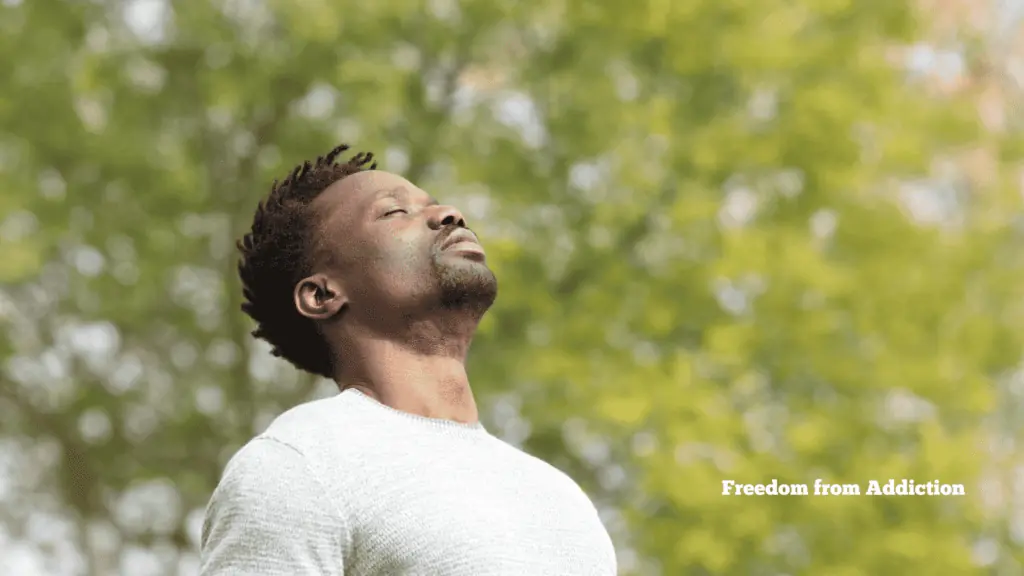
We Are Here To Help – The Nestled Recovery
Navigating the complexities of Ativan addiction is a challenging but essential journey towards reclaiming a healthier, more fulfilling life. Understanding addiction’s nature, its symptoms, and the available treatment options, including the various phases of recovery, are pivotal in this process. The Nestled Recovery in Las Vegas provides a comprehensive and compassionate care tailored to each individual’s journey towards healing and renewal.
If you or someone you know is struggling with Ativan addiction, remember that help and healing are within reach. The Nestled Recovery Center in Las Vegas stands ready to support you with expert care and a nurturing environment, guiding you every step of the way. Reach out today, and take the first brave step towards a brighter, addiction-free future.

